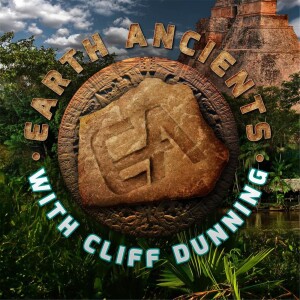
Michael Cremo: Forbidden Archaeology: Hiding our Past at Hueyatlaco Mexico
 2020-10-10
2020-10-10
Download
Right click and do "save link as"
Hueyatlaco is an archeological site in the Valsequillo Basin near the city of Puebla, Mexico. After excavations in the 1960s, the site became notorious due to geochronologists' analyses that indicated human habitation at Hueyatlaco was dated to ca. 250,000 years before the present. These controversial findings are orders of magnitude older than the scientific consensus for habitation of the New World (which generally traces widespread human migration to the New World to 13,000 to 16,000 ybp).
In 1973, Virginia Steen-MacIntyre, Malde and Roald Fryxell returned to Hueyatlaco to re-examine the geographic strata and more accurately determine an age for the tool-bearing strata. They were able to rule out Malde's streambed hypothesis. Moreover, the team undertook an exhaustive analysis of volcanic ash and pumice from the original excavation site and the surrounding region. Using the zircon Fission track dating method, geochemist C.W. Naeser dated samples of ash from Hueyatlaco's tool-bearing strata to 370,000 ybp +/- 240,000 years.
Virginia Steen-McIntyre, A.B., M.S., Ph.D., is a tephrochronologist (volcanic ash specialist) with geology degrees from Augustana College (Illinois), Washington State University, and the University of Idaho. She has a secondary interest in archaeologic site stratigraphy. Most of her professional life has been spent working on the Hueyatlaco site, Puebla, Mexico.
Michael A Cremo is a research associate of the Bhaktivedanta Institute specializing in the history and philosophy of science. His persistent investigations during the eight years of writing Forbidden Archeology documented a major scientific cover-up
view more
In 1973, Virginia Steen-MacIntyre, Malde and Roald Fryxell returned to Hueyatlaco to re-examine the geographic strata and more accurately determine an age for the tool-bearing strata. They were able to rule out Malde's streambed hypothesis. Moreover, the team undertook an exhaustive analysis of volcanic ash and pumice from the original excavation site and the surrounding region. Using the zircon Fission track dating method, geochemist C.W. Naeser dated samples of ash from Hueyatlaco's tool-bearing strata to 370,000 ybp +/- 240,000 years.
Virginia Steen-McIntyre, A.B., M.S., Ph.D., is a tephrochronologist (volcanic ash specialist) with geology degrees from Augustana College (Illinois), Washington State University, and the University of Idaho. She has a secondary interest in archaeologic site stratigraphy. Most of her professional life has been spent working on the Hueyatlaco site, Puebla, Mexico.
Michael A Cremo is a research associate of the Bhaktivedanta Institute specializing in the history and philosophy of science. His persistent investigations during the eight years of writing Forbidden Archeology documented a major scientific cover-up
More Episodes
Taylor Keen: Rediscovering Turtle Island
 2024-06-22
2024-06-22
 2024-06-22
2024-06-22
Special Edition: The Best of Rev. Jim Willis
 2024-06-18
2024-06-18
 2024-06-18
2024-06-18
Dr. Kara Cooney: Recycling for Death
 2024-06-08
2024-06-08
 2024-06-08
2024-06-08
Destiny: Wendy Read, Cannabis Therapy
 2024-06-05
2024-06-05
 2024-06-05
2024-06-05
Randall Carlson: The Younger Dryas Impact
 2024-05-25
2024-05-25
 2024-05-25
2024-05-25
Dr. Edwin Barnhart: Mystery of the Olmec
 2024-04-27
2024-04-27
 2024-04-27
2024-04-27
012345678910111213141516171819
Create your
podcast in
minutes
- Full-featured podcast site
- Unlimited storage and bandwidth
- Comprehensive podcast stats
- Distribute to Apple Podcasts, Spotify, and more
- Make money with your podcast
It is Free
- Privacy Policy
- Cookie Policy
- Terms of Use
- Consent Preferences
- Copyright © 2015-2024 Podbean.com


